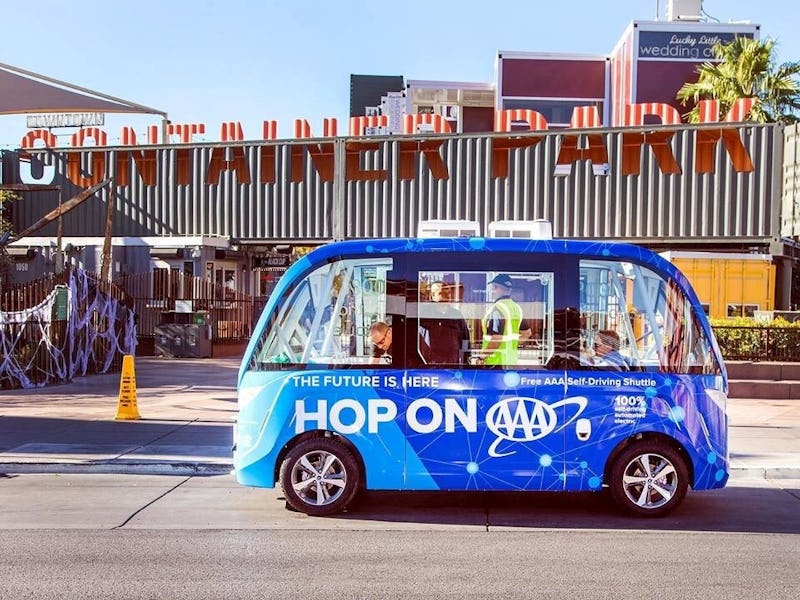Forget the autonomous car — one expert believes the cities of the future will feature self-driving buses whizzing around. Amos Haggiag, one of the major players behind Las Vegas’s autonomous bus program, sees a future where cities crack down on self-driving cars and push people to take the bus instead.
“The city will start to massively and probably aggressively favor mass transportation over taxis and private vehicles,” Haggiag, the CEO of the transportation startup Optibus, tells Inverse. “Then what I think will happen is people will use mass transit and autonomous taxis in one holistic system.”
The number of people living in urban areas increases is projected to reach 66 percent by 2050, so autonomous driving poses a problem. With no taxi driver in the equation, the cost of private transport will drop and the number of people wanting to be on the road will spike to unsustainable levels. In a single system, cities could offer a fixed monthly price for all transit needs, with people switching from car to bus to get around the otherwise congested central areas.
It’s not an unpopular idea, either. Assaf Biderman, associate director of MIT’s Senseable City Lab, told Inverse last May that such a solution could give rise to single-seater autonomous cars that ferry people to the outskirts of the central zone. Even Elon Musk raised the idea of a Tesla bus hailed by smartphone in his second master plan, released in 2016.
Haggiag spends a lot of time thinking about making cities efficient. Optibus, which maps out routes for 200 cities, uses machine learning to create the best schedules for public transport based on how passengers really move around. The company uses a range of sources to schedule these routes, from the likes of mobile signals, location data from mobile applications, and even sensor data collected by the local government.
His company is helping transportation firm Keolis schedule its fleet, including its autonomous eight-seater electric shuttle service operating on a loop around downtown Las Vegas.
Watch the bus in action here.
The shuttle was one of the first public autonomous vehicles to successfully hit the road, save for a minor collision on its first day. Haggiag thinks there’s a good reason for that.
“I think autonomous bus transportation makes a lot of sense. It actually makes more sense than autonomous cars,” he says. “Think about the bus that drives the same route each day. It’s much easier to train the computer vision and machine learning of autonomous vehicles to ride a certain route than to ride everywhere.”
Haggiag also notes that autonomous buses would be easier to shape to a city’s demands as needed, even factoring in pit stops to charge batteries.
“We are today living in a very constrained world,” he says. “With autonomous vehicles, you can do whatever you want, with the limitations of electric vehicles.”
Optibus would probably never try to change the route in real-time — that would be frustrating for users waiting at a bus stop — but changes for every day or week are entirely feasible. Currently most clients change their route every few months, but one Canadian customer optimizes daily for its private commuter shuttle service.
Haggiag has been thinking about this problem for a long time, ever since he was an undergraduate student at Ben Gurion University in 2004. He went on to research machine learning for Seimens and Collarity, before working at Microsoft for four years as senior software development engineer. In 2014, he co-founded Optibus, and since then it’s moved from strength-to-strength, closing a $12 million series A round of funding two months ago.
Whether cities will ban private cars from the center, Haggiag is sure about one thing: the changing economics that come with autonomous driving will lead to a mass shift for the auto industry.
“Autonomous vehicles definitely will cause people not to buy cars,” Haggiag says.
